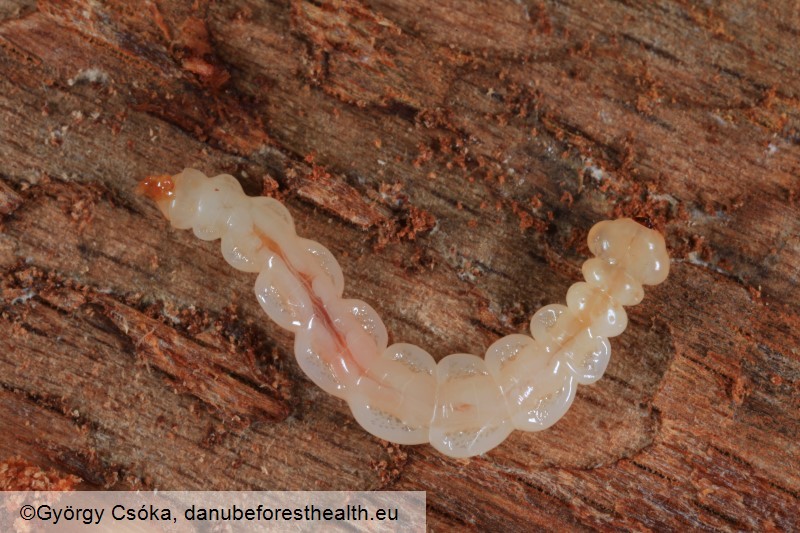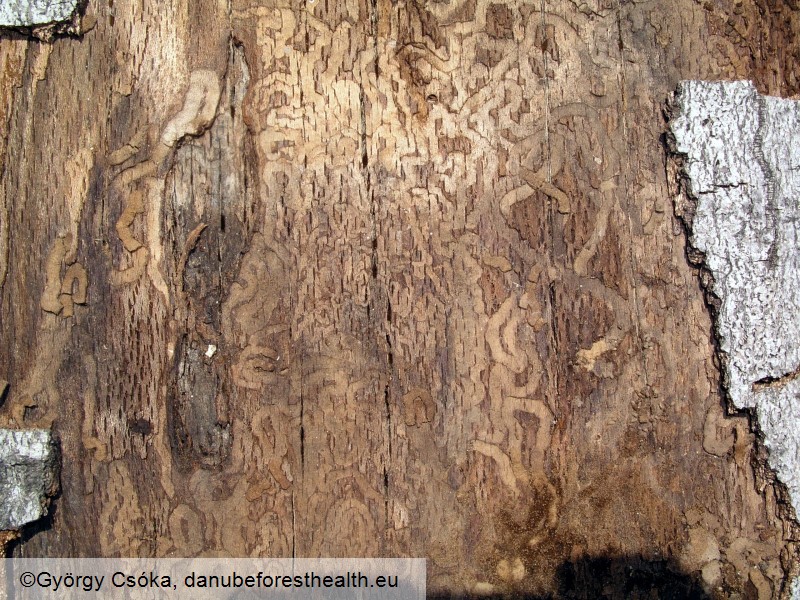Animalia
Beech splendor beetle
Agrilus viridis
Maarten de Groot
|
|

Fig. 1. Adult of Agrilus viridis

Fig. 2. Larva of Agrilus viridis

Fig. 3. Galleries on a beech tree by Agrilus viridis

Fig. 4. Dark spots on the bark. Under these spots are galleries caused by Agrilus viridis
DETECTION PERIOD:
May-October (flight period), whole year (damage)
DESCRIPTION:
The adult is a large shiny green buprestid beetle (8 to 14 mm). The larvae is has a typical shape of a buprestid beetle with a first few segments widened while others are narrow and is creamy white colored. The life cycle is 1 to 2 years. Significant damage to the trees are the S shaped galleries under the bark. This causes dark spots on the bark. When adults are exiting the trees it produces a typical D-shaped exit hole.
HABITAT:
Deciduous trees, mainly Beech (Fagus spp.), willow (Salix spp.), Birch (Betula spp.) and sometimes Oak (Quercus spp.).
STATUS:
The species occurs in all the countries in the REFOCuS study area.
IMPACT:
The beech splendor beetle is a secondary pest and also attacks stressed trees caused by drought. Larvae are girdling the trees and therefore cutting the tree off its resources. The tree species, the beech splendor beetle attacks are from ecological and economical importance. In areas with many trees and under drought circumstances, this species can have large outbreaks.
SIMILAR SPECIES:
Other buprestid beetles of the genus Agrilus. The adults of the beech splendor beetle can be mainly confused with larger Agrilus species like the emerald ash borer or the spotted oak borer. The first species have has red upper abdomen and the latter species has two white spots on the elytra.
|